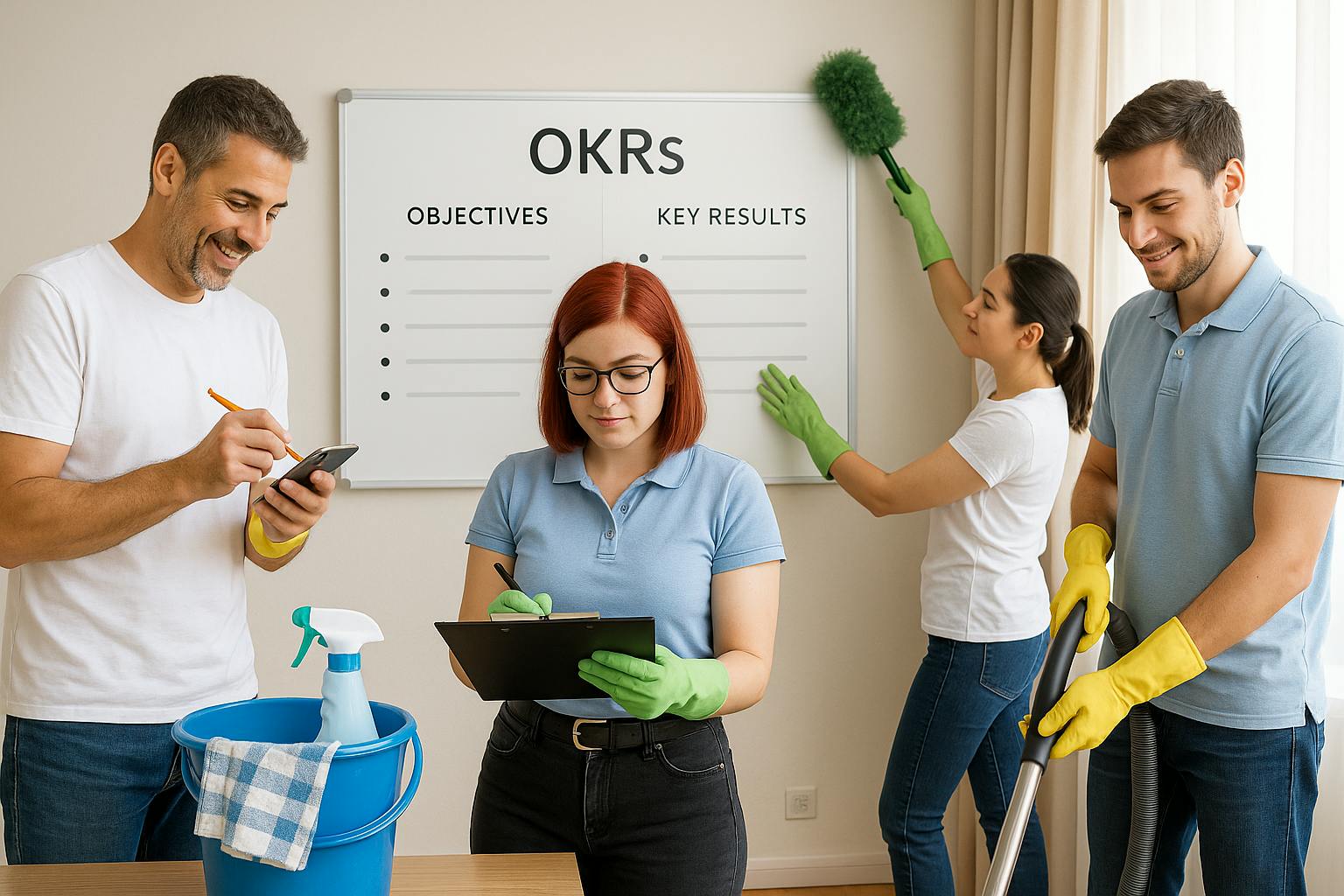Starting to clean the house: Lessons from the first OKR pilots

Agilar Team
02 Sep, 2025
product ownership
product ownership

Adopting OKRs in a large organization is not that different from deciding to deep clean your house. Not the quick dusting you do before guests arrive, but the kind where you make space, reset priorities, and figure out a routine that actually lasts.
The hardest part isn’t making the decision. The hardest part is starting—and, especially, deciding how.
Where to begin
When a global FMCG company set out to introduce OKRs, they didn’t try to clean the entire house at once. That would have been overwhelming. Instead, they picked a couple of “rooms” that mattered: two medium-sized countries, each with factories, operations, and sales.
Big enough to capture the full complexity of the business. Small enough to experiment safely.
Just like starting with the kitchen or the living room—you don’t tackle every corner of the house, but you choose a place where progress is visible and meaningful.
Preparing the tools
Before you start scrubbing, you gather your cleaning supplies. The same happened here: before running their first quarterly planning, the company prepared through communication, training, and workshops.
Employees were invited to presentations and townhalls, leaders aligned on how priorities would shift, and teams learned what “good” OKRs look like. Some people even received deeper training and coaching, since they would be the ones leading the process.
Without this preparation, the first attempt would have looked like sweeping dust from one corner to another.
Facing the clutter
In week three, the real work began. Teams had to prioritize initiatives, which meant leaving some projects behind. That was not easy. Saying no to certain efforts felt like deciding which old boxes in your attic to finally throw away.
But this was one of the most powerful shifts. By limiting what was “in progress,” teams freed up capacity to focus, collaborate, and actually deliver outcomes.
The first clean sweep: From planning to OKRs
Finally, after 5–6 weeks, the organization held its first quarterly planning. Each team graded past work, reviewed learnings, and defined OKRs for the quarter ahead. Not everything was perfect—some OKRs still needed refining—but the overall result was positive.
The house wasn’t spotless yet, but it felt different. People understood the reason behind the change, and they were motivated to keep improving.
The takeaway
Pilots are about more than testing a framework. They are about building confidence, creating new habits, and proving that the “house” can indeed be cleaned—and kept that way.
This FMCG company’s first OKR pilots showed that the key is not finding the perfect method before you begin. The key is to start, learn, and adjust your approach as you go.
Because in both cleaning and OKRs, progress comes one room at a time.